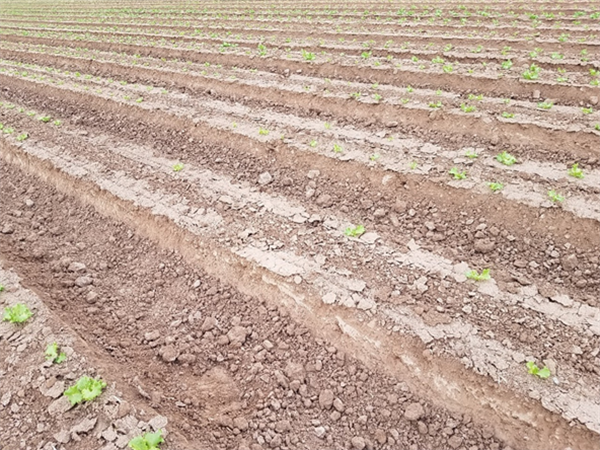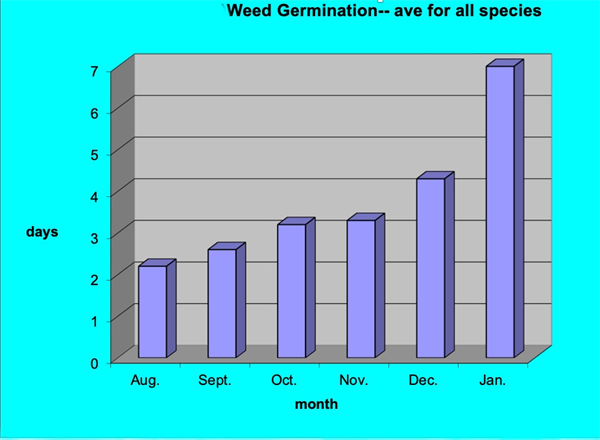Nov 29, 2017
Aphid Management on Lettuce Using Imidacloprid and Foliar Insecticides
In a recent update, we anticipated that PCAs would soon begin finding aphids infesting local lettuce and cole crop fields. Thus far, we have found a few small colonies of green peach aphids on broccoli and cabbage plants, but alate (winged adults) are quite common on lettuce plants. Timing of aphid colonization in leafy vegetables varies by species, and depends largely on temperature, rainfall and planting dates. However, my experience over the years, as well as observations from numerous field trials, suggests that aphid species that infest leafy vegetables are historically most severe on crops planted from mid-November through December. Of course, there are exceptions to the rule and aphids can occur when least expected. Consequently, you should begin planning now for spring aphid management. Growers and PCAs have effective options for aphid management on spring leafy vegetable crops. First, there is the responsive approach that relies on foliar insecticide sprays to reduce aphid numbers when they are found on crops. A number of insecticides are available that have cost-effective activity against aphids when applied as foliar sprays targeted at aphid populations as they begin colonizing plants. Among the more effective compounds are Movento, Sequoia, Beleaf, Sivanto and Assail. There is also the preventative approach where growers can apply neonicotinoid insecticides at-planting, 1.5 to 2 inches below the seedline. The insecticide is taken up by the plant roots, systemically translocated throughout young plants for several weeks following emergence, and ultimately prevents aphid colonization early in plant development. Both approaches can be very effective, and both can be used on the same field. Among the neonicotinoids, imidacloprid has been the standard soil insecticide applied on spring lettuce for aphid control for 24 years and continues to provide long residual control when used properly. However, the question has recently been posed: Which approach to aphid management is better? Our research suggests a combination of both; imidacloprid applied at planting, followed by a foliar insecticide(s) if needed under heavy late season pressure. For more information on this topic please visit the research report
- Aphid Management on Head Lettuce Using Imidacloprid and Foliar insecticides.

In response to the recent outbreaks of Diamondback moth (DBM) , Plutella xylostella in Yuma, we have established a pheromone trap network designed to monitor the activity and movement of adult populations of DBM. PCAs have had difficulty controlling DBM in cabbage, broccoli and cauliflower since October. Traps have been placed in Roll, Wellton, Dome Valley, Gila Valley and Yuma Valley in locations where cole crops are presently being grown or in areas where infestations were known to occur this fall.
To contact John Palumbo go to:
jpalumbo@ag.Arizona.edu
 In response to the recent outbreaks of Diamondback moth (DBM) , Plutella xylostella in Yuma, we have established a pheromone trap network designed to monitor the activity and movement of adult populations of DBM. PCAs have had difficulty controlling DBM in cabbage, broccoli and cauliflower since October. Traps have been placed in Roll, Wellton, Dome Valley, Gila Valley and Yuma Valley in locations where cole crops are presently being grown or in areas where infestations were known to occur this fall.
In response to the recent outbreaks of Diamondback moth (DBM) , Plutella xylostella in Yuma, we have established a pheromone trap network designed to monitor the activity and movement of adult populations of DBM. PCAs have had difficulty controlling DBM in cabbage, broccoli and cauliflower since October. Traps have been placed in Roll, Wellton, Dome Valley, Gila Valley and Yuma Valley in locations where cole crops are presently being grown or in areas where infestations were known to occur this fall.
 To contact John Palumbo go to: jpalumbo@ag.Arizona.edu
To contact John Palumbo go to: jpalumbo@ag.Arizona.edu









